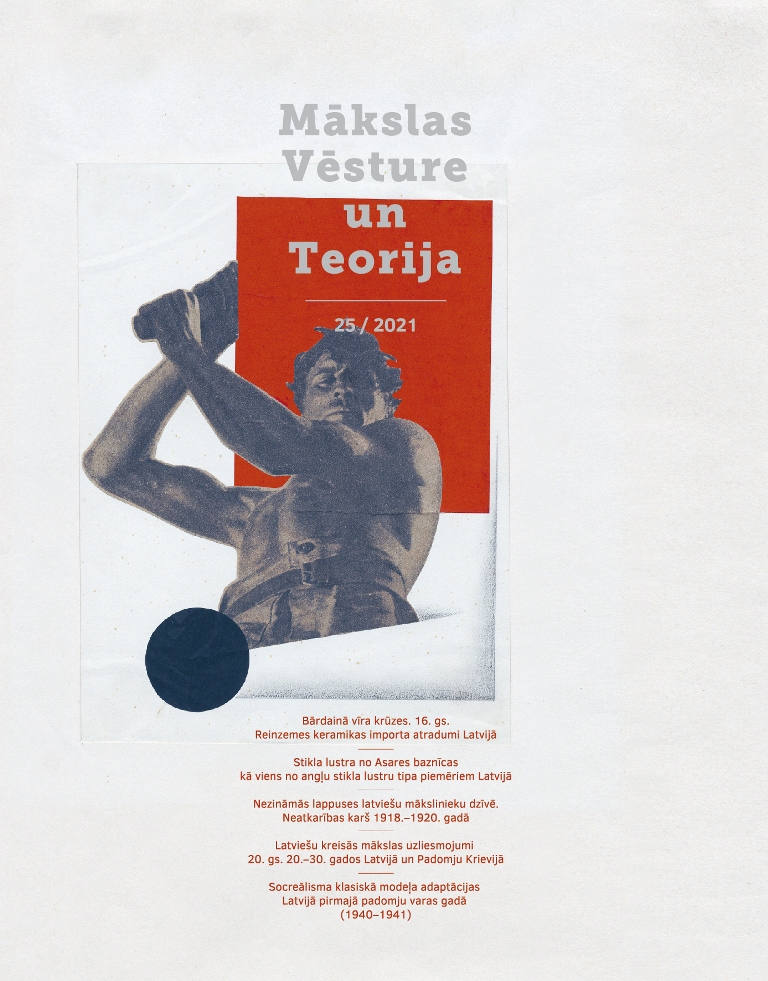Bārdainā vīra krūzes – 16. gs. Reinzemes keramikas importa atradumi Latvijā
Bartmann Jugs – Latvian Finds of 16th Century Imported Rhineland Stoneware
Author(s): Ieva OseSubject(s): Archaeology, Cultural history, Visual Arts, 16th Century, 17th Century, History of Art
Published by: Mākslas vēstures pētījumu atbalsta fonds
Keywords: Bartmann jugs;German stoneware;archaeology;ceramic art;
Summary/Abstract: The so-called Bartmann jug is one of the typical forms of the German stoneware tableware produced in the pottery workshops situated near the River Rhine, especially in the Cologne region, in the post-medieval period. The characteristic decoration on the neck of these jugs is a large and expressive bearded man’s mask. Bartmann jugs – just like other items of German stoneware – were widely exported to the Baltic Sea region. Some dozens of Bartmann jugs’ fragments have been found in Latvia during archaeological excavations in the second half of the 20th century. Using Latvian finds, this paper briefly describes the transformation of the bearded mask and the development of other decorative applications on these jugs during the 16th century. Foreign parallels have allowed us to determine the approximate date and place of production of the Latvian finds. Current research suggests that fragments of Bartmann jugs were mostly excavated in Riga Old Town. They are stored in the Riga History and Navigation Museum (published in: Reinfelde 2012). There are also several archaeological finds from the cultural layers of some castles situated near the Gauja River. Smaller stoneware jug fragments decorated with four bearded masks were excavated in Turaida castle, which belonged to the Archbishop of Riga till the mid-16th century. They are stored in the Turaida Museum Reserve (published in: Ose 2019). A large collection of ceramics was found during excavations at Cēsis castle, the residence of the Master of the Livonian Order in the first half of the 16th century. It includes large fragments of four Bartmann jugs with applications of bearded men’s faces and several smaller sherds with friezes and medallions that decorated the body of these stoneware jugs. It is possible that Bartmann jugs have also been in Āraiši castle, situated not far from Cēsis, but only small sherds with probable décor of the body were found there, not the bearded masks. Remains of the Bartmann jugs have also been found in two castles near the lower reaches of the Daugava River – in the excavations of the Ikšķile and Salaspils castle ruins. The archaeological ceramic collections from Cēsis, Āraiši, Ikšķile and Salaspils are stored in the Latvian National History Museum and have yet to be published. Fragments of Bartmann jugs were not found in the archaeological ceramic collections of Bauska, Sēlpils, Alūksne and other castles. It is not clear whether these jugs may not have been used there or may not have been found due to the relatively smaller volume of excavation areas.
Journal: Mākslas Vēsture un Teorija
- Issue Year: 2021
- Issue No: 25
- Page Range: 6-18
- Page Count: 13
- Language: Latvian
- Content File-PDF

